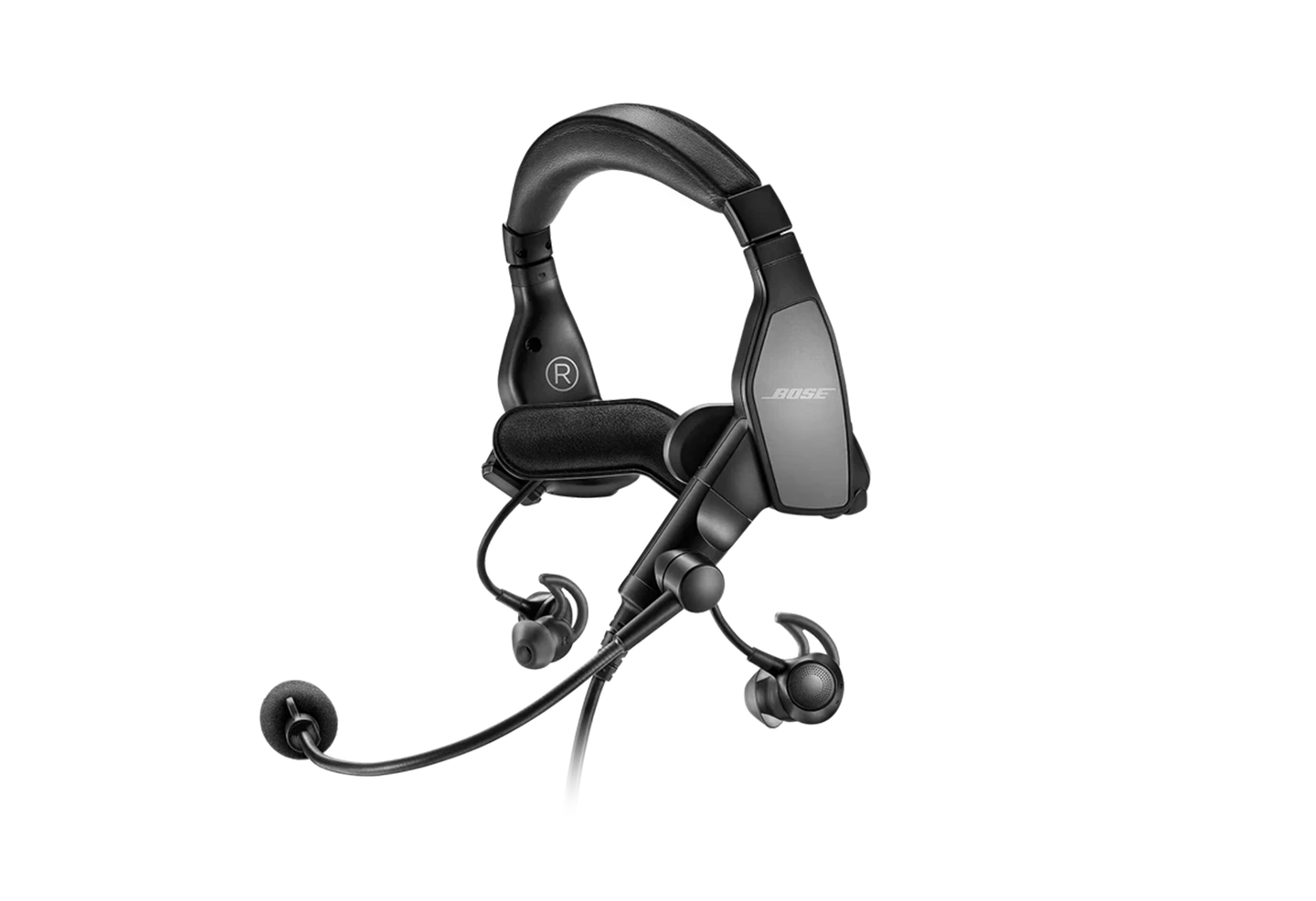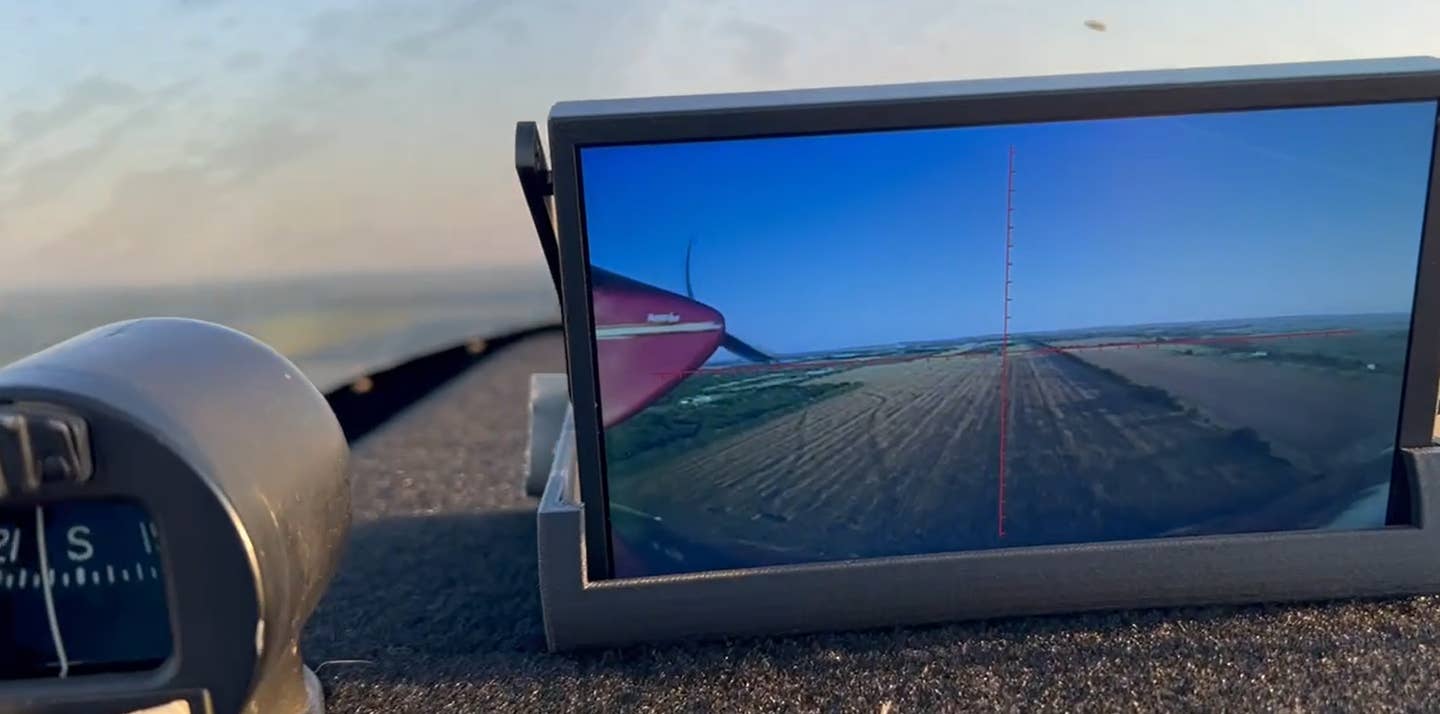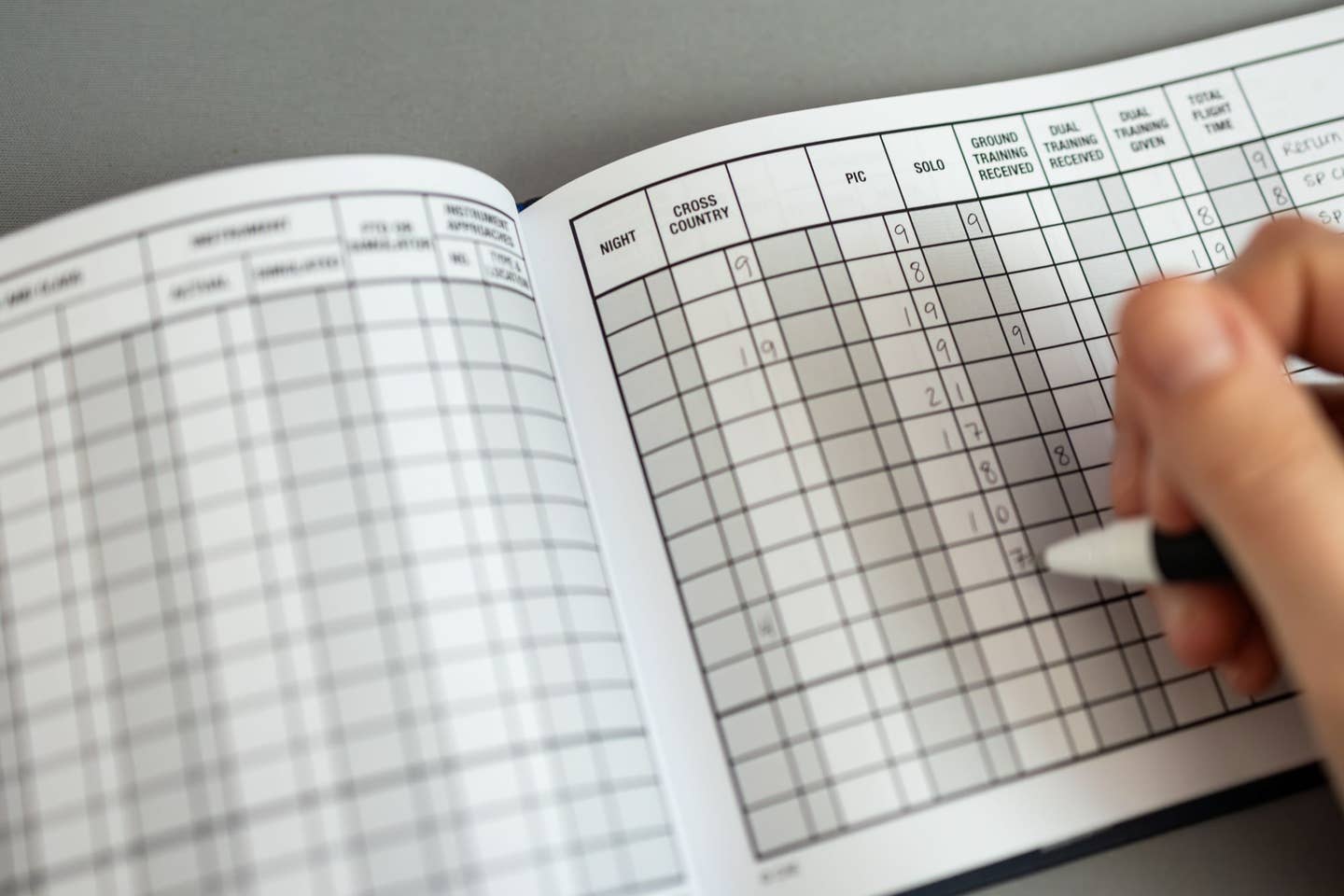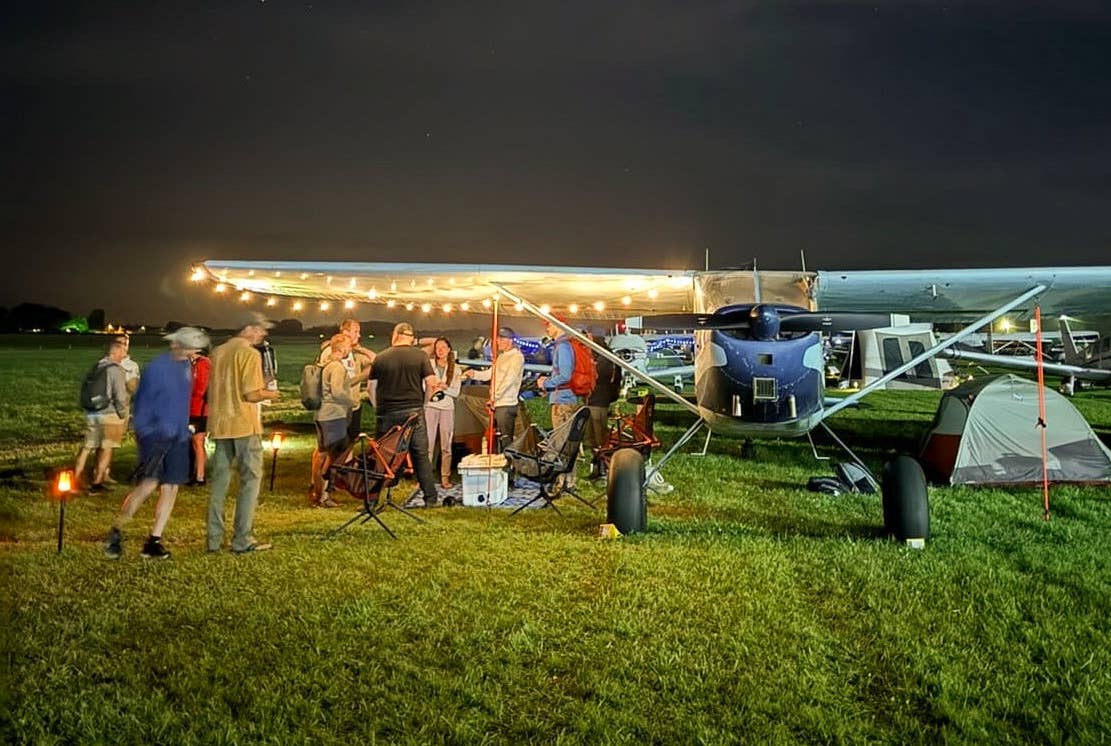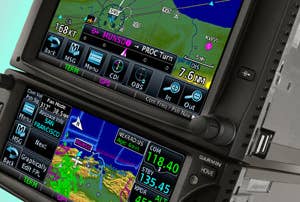
(April 2011) SINCE ITS INTRODUCTION in 1998, Garmin's remarkable GNS 430 navigator and its larger GNS 530 companion have become the de facto standard in aftermarket aircraft avionics. And no wonder: In the various iterations, the multifunction panel-mount units serve as a moving map, a navigation receiver, a communications transceiver, a GPS (and, later, WAAS) receiver, a flight management system and an airport and facilities database, as well as providing displays for traffic, satellite weather, lightning strikes, terrain awareness and more. In that time, Garmin has sold well more than 100,000 GNS-series navigators, making it arguably the most successful avionics product in history.
So it’s big news indeed that Garmin is announcing the successors to these navigators and that those successors are so very different in nature from the originals.
The GTN 650 and the larger GTN 750 do many of the same things that the 430 and its spinoffs do. Both products were expected to be certified and shipping by the time you read this.
While the new navigators both utilize touch-screen displays, Garmin vice president of sales Gary Kelley says that the screens are not the most revolutionary part of the product. After flying them myself, I wholeheartedly agree. The most amazing part is how easy they are to use.
The price is right too. The GTN 650 sells for $11,495, and the larger GTN 750 goes for $16,995. At those prices, many owners will look not just to add a new navigator to their airplane but also to replace existing 430s and 530s.
Regardless of its other impressive features — and I will get to those in a few moments — touch screens are big news. The truth, though, is that no one who’s been paying careful attention will be very surprised by the general shape of these products. The writing has been on the wall for some time now. In fact, when Garmin introduced its first touch-screen aviation handheld a couple of years ago, I immediately began to wonder just how big a role touch-screen technology would play in the remarkably innovative company’s product lineup in years to come. The suspense was short-lived, it turned out, because Garmin announced in the fall of 2009 that it was developing an integrated touch-screen avionics suite for the launch customers Piper and Honda for their fledgling jet programs. Just last year, Garmin introduced a successor product, the G5000, an avionics system deck intended for business jets. Launch customer Cessna announced it would put G5000 in its redefined Citation Ten.
Both avionics systems feature not touch screens exactly but touch-screen controllers. The effect is in most respects the same. You lose the buttons and keys and use the touch pads to control the displays in a very graphical way. The controllers simply put the action that much closer to you. The jump to direct touch screens for panel-mount navigators makes sense, since the units they are replacing are close enough to the pilots that they can control them directly.
Garmin Touchscreen Navigators
Just as there were different models of 400 and 500 series GNS navigators, the two new products are the first of a family of touch-screen panel-mount products. GTN, as you might have figured out, stands for "Garmin Touchscreen Navigator." There are just two available now, the large screen GTN 750 and the pretty large screen GTN 650. Other variants will doubtless be introduced over time.
While Garmin will continue to produce the 430 and 530 for a while, there’s no doubt that the new products will eventually take their place. (Garmin’s official stand is that it will continue to offer both the 430 and 530, though at some point in the future they will be discontinued when certain limited supply parts run too low for making new units.)
Even though both product lines will be available for a while, pilots who can afford the slightly higher price of the GTNs won’t want to economize. The new boxes are better in nearly every respect than the products they will replace.
For starters, they feature much faster processors, a fact that is quickly evident as soon as you zoom, pan or switch screens. This fast response is not only convenient; it also makes for less heads-down time.
The displays are huge improvements over those in the 400 and 500 series navigators. Both make use of LED technology for brighter colors, more vibrant hues — there are 16 million colors available — and greatly improved sunlight readability.
As you can see in the accompanying photos, both displays are substantially larger than their predecessors.
For the 650, this is true despite it being the same height and width as the 430. Because the 650 is a touch-screen device, the “keys” are essentially built into the display, so the bezel is freed up to do something other than house hardware-based controls.For Garmin, the decision on what to do with the additional real estate was a foregone conclusion: make the display larger. And it did. The screen on the 650 is more than 50 percent larger than that of the 430. It’s also a much more detailed display, with five times as many pixels as in the 430.
The difference in screen size is far more dramatic with the 750, a fact that Jim Alpiser, Garmin’s aftermarket sales manager, predicts will all but eliminate the need for many pilots to purchase a stand-alone MFD for the panel.
This is true in part because the 750 is simply a much larger box than the 530. It takes up slightly more area than a 530 and a 430 combined. For the record, the screen on the 750 is 6.9 inches diagonally, making it just a hair less than twice as big as a 530. While it looks as though the top section of the 750 would simply overlay the panel, it actually takes up a couple of inches of room inside the panel.
For many owners, this larger form factor will necessitate moving or removing a panel-mount device of some kind. It will also require cutting a new hole in the panel and relocating other equipment, both of which could entail some substantial installation costs.
Still, a lot of owners will make the sacrifice and make the 750 their MFD of choice not only because it’s big, but also because it can do some things that other aftermarket MFDs just can’t. For example, the popular G200, Garmin’s current retrofit MFD, will have an impossible time competing against the 750 in terms of price or capabilities.
Apart from size, there are a few important differences between the 650 and the 750. The 750, because of its larger size, has several capabilities available now or down the road that the 650 lacks. Right now the 750 can control a remote-mount Garmin digital audio panel (the GMA35), providing a graphical interface through which the pilot can do all kinds of things most pilots have never seen an audio panel do. (Look for more in an upcoming issue on Garmin’s remarkable new lineup of digital audio panels, both remote mount and panel mount.) The ability to interface with a remote audio panel also potentially frees up space in the panel. This is also true for another of the 750’s abilities, controlling a remote transponder, something the GTN 650 can also do. The 650, for the record, can’t control an audio panel, though Garmin does offer an impressive new stand-alone unit, the GMA 350, that will surely find a home alongside a lot of 650s.
Good Touch
Both units feature touch screens, but the technology, capacitive touch, is different from the infrared display technology employed by Garmin in its panel-mount touch-screen navigators. Honestly, if Garmin hadn't told me that, I would never have known. The feel of the units is nearly identical.
The touch screens are marvels in ease of use. Touch an icon without hitting it squarely and you get a “bonk” tone, notifying you that the touch didn’t work. Touch a button and then take your finger off in a different area than you touched, and you get bonked again. The displays require an accurate touch, but they do it without being finicky. And because both units are designed with beveled rails along the sides and bottom, you always have a convenient place to anchor your hand. So even when it’s pretty bumpy — I tried it in some pretty good chop — it’s still easy to input what you want to input. So let me put to rest the concern that many pilots will have, that they won’t be able to control these units in turbulence. Based on my experience with them so far, I’m convinced it will be as easy if not easier to get the desired results on a bumpy day with these touch-screen navigators than it is with a 430 or 530 today.
Sensitive to the likes and dislikes of different pilots, Garmin designed the GTN products so that the pilot can control them with no buttons or with nothing but buttons. Both have a “direct-to” button on the right-side bezel, and both have a “home” button on the upper right-hand side of the bezel. The dual concentric knobs and “home” button both feature knob technology that was unknown in aviation even a few years ago. Both barrels of the knob can be twisted in either direction, and the center barrel can be pushed to select or enter a value. Using this knob you can scroll between options — there are no drop-down menus — flip-flop frequencies and toggle back and forth between the comm and nav radios. Likewise, the “home” button allows the pilot with a single short push to go back to the main menu or, with a longer push, to go back to the main map screen. (On the 650, the longer push takes you to a CDI/informational navigation page.)
One dedicated button that I’m not crazy about but which I quickly got used to is the “direct-to” button. My problem with the button isn’t that it’s there — I don’t care if it is or not; my gripe is that there’s not a touch-screen “direct-to” button on the screens where I’d be looking for it to be. Instead, you need to reach for the hard button, which changes one’s focus from screen to bezel unnecessarily.
Flying GTN
I flew the GTN 750 and GTN 650 in a dual box center-stack install in Garmin's Mooney Ovation II. In front of me was Garmin's popular PFD/MFD product, the G600.
My training in GTN technology had consisted of watching a short video overview of the products and sitting through a briefing of the products, which were mounted in a desktop kiosk.
I’d also had the chance previously to “fly” an as yet unannounced Garmin touch-screen integrated avionics suite in the company’s human factors lab. There is much similarity between the software, symbology and user interface logic of the GTN products and those of the integrated avionics suites.
Both systems do away with menus and a lot of the text, making use instead of a highly graphical user interface with big touch-sensitive symbols and a very shallow menu system. The approach makes operating the system so easy that it is nothing short of revolutionary. While the GNS 430 gave pilots a navigator that did much more than anything they’d ever had in the panel (GPS and later WAAS, nav and comm radios, FMS, vertical navigation, user waypoints, GPS approaches and more), it is not an easy box to learn.
The GTN navigators, on the other hand, are remarkably easy to learn and to use. On my hourlong demo flight with Garmin flight-test pilot Grant Wittenborn, I handled the radios, entered and frequently modified our flight plan, used the vertical nav functions, controlled the audio panel, found a few nearest airports and other waypoints, flew an ILS approach and checked on the fuel. On a few occasions Grant helped me out, not by telling me how to do something but by telling me how to do something in a way that would save me a couple of button touches.
I fly IFR the majority of the time; consequently, I enter and modify flight plans on a regular basis. Living in central Texas, I’m lucky to be able to fly “direct-to” routes regularly, a welcome change from my former East Coast existence. But when I need to fly airway routings with the 430, it always requires digging out a chart and entering the relevant waypoints along the airway. It’s time-consuming and it distracts me from other cockpit duties.
With the GTN navigators, airway flight planning is remarkably easy and intuitive. Let’s say that I’m planning a flight from Austin to Oklahoma City and I get a clearance to fly to Will Rogers Airport via Centex VOR (CWK), V17 and IRW (Will Rogers) direct to the airport, about 350 nm distant. Doing it the old-fashioned way would have required that I enter eight waypoints, all the while folding and fiddling with charts as I followed the twists and turns of the airways. With the GTN navigators, all I need to do is enter CWK and from there V17, exit the airway at IRW, and I’m done. It does all the twisting and turning for me, so I can concentrate on flying the airplane instead of telling the navigator something it should already know. Like just about every other feature on the GTN, airway flight planning is so intuitive you don’t need instruction to figure out how to do it. It just makes sense. On my flight in the Mooney, I taught myself to use the system literally on the fly.
On the 750, the audio panel functions are likewise cutting edge. While I could write an entire piece on these new functions, I will instead go into just a few of the features. As I mentioned before, the 750 interfaces with the optional GMA35 remote-mount audio panel. The pilot will use the 750 to control the audio. While you can do all the usual kinds of things you need to do, like switching from one radio to the next, you can also do a variety of previously impossible things, like selecting completely different audio sources for the pilot, copilot or passengers and using different volume levels for the same audio input for those different stations. And you do this all by touch, using your finger to activate or deactivate connections between occupants. The coolest feature, and the one you’re likely to hear the most about, is automatic speech recognition. Using this feature (which is in its infancy), you can select and tune nav and comm radios simply by using your voice. I tried it. It worked flawlessly. But the automatic squelch feature is the new feature of which Garmin is arguably proudest.
I’ll sometimes get done with a first flight with a new technology and feel as though, even after just a couple of hours of familiarization, I was nearly ready to tackle the equipment on my own. With the GTN navigators, I felt as though I didn’t even need the familiarization flight.
GTN Futures
With so many GNS 430s and GNS 530s installed in so many tens of thousands of airplanes, it's unlikely the GTN products will sell as well as the products they're replacing. After all, a lot of these GNS units are still doing everything their owners want them to do. Still, the new units are bound to be very successful for a few undeniable reasons. First, they're from Garmin, they're new, and they're cool. Pilots are going to want them. Second, the GTNs are simply better at doing what the old guard boxes do. They do more and they do it with less effort. Finally, while they already can do more than their predecessors, this is only the beginning. While Garmin isn't speaking specifically about what kinds of future capabilities its new touch-screen displays will have, suffice it to say that there are plenty of announcements yet to come.
For more on the GTN 650 and 750, check out this video review of the new navigators.
_Also check out Robert Goyer's retrospective on the navigator that started it all.
_

Sign-up for newsletters & special offers!
Get the latest FLYING stories & special offers delivered directly to your inbox

